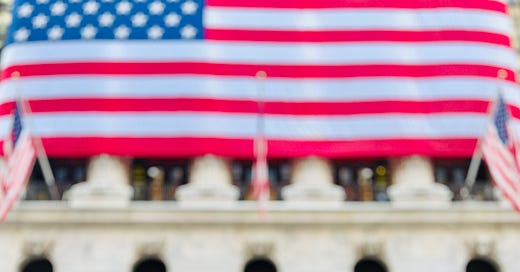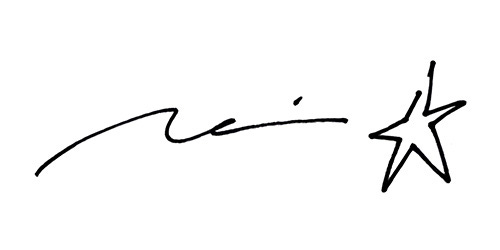The Triumph of Brand
The eight uncomfortable truths about branding and storytelling behind Brand Trump
The morning after Election Day in 2016 in New York City felt like a funeral.
Walking to the train station and getting on the subway, we could see the darkness on everyone’s faces and sense it in the air. Everyone was in disbelief. No one expected it, including Trump himself and his team.
This year, when I went to drop my son off at school on Wednesday, hours after the NY Times headline “TRUMP STORMS BACK,” the mood was surprisingly normal. The usual chitchat among parents awkwardly avoided the elephant in the room, i.e. “How was your race over the weekend?” referring to, not the presidential race that just ended, but the NYC Marathon two days prior.
We hoped it was going the other way. All the major polls suggested so. But given 2016, we knew deep down that this might happen. And when it did, we didn’t want to admit it. We weren’t ready to accept the reality.
The Cognitive Revolution
About 70,000 years ago, something happened in the brains of Homo sapiens.
“Evolutionary changes to brain structures and linguistic abilities gave sapiens an aptitude to make and tell fictional stories and be deeply moved by them,” writes Yuval Noah Harari in his latest book Nexus.
Combine this with the widespread misinformation powered by automated bots and AI. The Information Age has become the AI (Augmented Information) Age.
That’s not a healthy cocktail and is not going to end well. So here we are.
Countless articles, analyses, videos, and podcasts dissecting how Biden should have dropped out sooner, what Harris could have done, etc., have already been published. I loathe those LinkedIn posts from wannabe marketing influencers. Guilty I shall be.
The question isn’t how Harris lost or Trump won. It’s why Trump won.
“This election was about who told a better story about the fundamentals without promising anything to fix those fundamentals,” says Tressie McMillan Cottom, a NY Times Opinion columnist in her “How Harris Lost Will Be Her Legacy” op-ed.
But “better” is relative. Depending on one’s view, the story Trump told was horrific and shockingly worse to 48% of Americans.
What worked for the 50.5% who voted for Trump (1.5% voted for Jill Stein and a few others)?
Behind the unfathomable and undeniable power of Brand Trump are the eight uncomfortable truths about branding and storytelling.
For the record, I’m not suggesting that these are the principles that should be followed. They are my observations.
1. Simplism > Idealism
When we were working on a strategy document for our client, a Japanese colleague murmured, “Maybe we should use low-IQ language. Like Trump does.”
This is not politically correct to say, I know. But there’s an uncomfortable truth to this.
Some of the most famous taglines of brands transcend language barriers. The most famous of all is “Just Do It.” Nike doesn’t translate this; it’s used as is. It may not be fully understood by non-English speakers but is understood enough to be effective.
Another tagline that gets referenced often in creative and marketing circles is “Think Different.” But outside of the Western hemisphere, like in Japan, it’s not understood or felt. While it’s simple, it’s not simplistic. It’s idealistic.
“Make America Great Again” is another English tagline that has transcended language barriers and national borders. People worldwide know it.
It’s not deep or idealistic. It’s simplistic.
2. Consistency > Decency
Since Day 1 of Trump’s campaign, this MAGA message has been consistent. Can you recall a consistent tagline from the Democrats? The closest is “Yes, We Can” of the Obama campaign.
Just like so many things, this tagline is not a Trump original. “Let’s Make America Great Again” was Ronald Reagan’s 1980 campaign tagline. Reagan, or anyone else, never trademarked it. In November 2015, Trump trademarked “Make America Great Again” with a different agenda. There wasn’t much decency in it.
If it sticks and stays consistent, it wins, regardless of decency.
Consistency builds reliability in branding, even when controversial, whereas decency may be perceived as flexible. Trump’s unwavering style, though divisive, signaled authenticity to his base in a way that moral decency did not.
3. Myth > Truth
The list of lies, fake news, and fiction he spread is extensive and exhausting, starting with "I could stand in the middle of Fifth Avenue and shoot somebody, and I wouldn't lose any voters, OK?" Many of them couldn't be farther from the truth.
According to data, the US economy in 2024 is strong compared to 2019 when Trump was president. GDP has grown since then. The unemployment rate is 3.5%, similar to 2019. By most measures, the Biden administration has achieved significant economic growth.
Not according to Trump. He created the myth, “The economy was better when I was your President. I’m the only one who can fix it.”
4. Gut > Data
Since the spectacularly wrong poll numbers and probabilities on the day of the election in 2016, the media, including respected data-driven pollsters and analysts, were more cautious this time.
Major news outlets and forecasters proclaimed that this election was close, razor-thin, a pure toss-up. While it may not have been a landslide for Trump, it wasn’t close for Harris, losing all key swing states. In 2016, we didn’t know the outcome until days later; this year, we knew by 10 pm of Election Day, that Trump had won.
“My gut says Trump, but don’t trust anyone’s gut, even mine,” wrote Nate Silver a week before the election. On the morning of election day, his model predicted a 50% chance for Harris vs. Trump’s 49.6%. After the voting was done and counting had started, Silver took it down in the middle of the night, citing bugs in his model.
Touché.
5. Identity > Diversity
“I think Trump will win,” a very close friend confided to me the week before the election.
“America will vote for the white man.”
He’s from the South, has lived in NY for over twenty years, is well-read, and shares a similar value system as mine. I trust him.
Despite Harris’s impressive campaign with the hand and the limited time she was dealt, my friend felt America, including people of color, wouldn’t identify with and vote for a woman of color.
Brand Trump has been shameless about punching down on diversity and minorities. Unfortunately, it resonated with many, most notably young men. An 11-point swing from blue to red among men 18 to 29 is telling.
6. Defiance > Confidence
He won in 2016 because of his unshakable confidence. In 2024, he won because of defiance.
In the days leading up to election day, the language from the Trump campaign implied there was a chance Trump might lose. There was a lack of absolute confidence Trump always exhibited. It’s not surprising given the data.
But he never lost defiance.
7. Joker > Catwoman
In 2004, “Catwoman,” starring Halle Berry, was released. Made on a $100 million budget, it grossed $82 million worldwide.
Catwoman is morally elusive while Joker is defiantly evil with a twisted sense of humor. In 2019, “Joker” became one of the highest-grossing R-rated films ever, topping $1 billion worldwide.
On Joe Rogan’s podcast, Trump said, “You need at least the attitude of a comedian when you’re doing this business.” See above.
In her 100-day run, Harris got better and started to get this. Her appearance on Saturday Night Live the weekend before the election was great.
And remember, cats have nine lives. There are some strong, fearless cat ladies out there.
8. Crazy Ones > Smart Ones
Apple’s 1997 “Here’s to the Crazy Ones” ad hits different now.
It’s the second most famous ad after “1984,” another Apple ad aired once during the Super Bowl. “The Crazy Ones” was produced when Steve Jobs returned to Apple in the late 1990s and is credited with turning around the sentiment, especially internally.
The misfit. The rebel. The troublemaker. Not fond of rules. The Crazy Ones. Almost all descriptors in this ad script fit Trump.
It continues. “You can quote them, disagree with them, glorify or vilify them, but the only thing you can’t do is ignore them.” So true.
“The ones who are crazy enough to think that they can change the world are the ones who do.” Also true.
That doesn’t mean always for the better.
To summarize, the eight uncomfortable truths about branding and storytelling are:
Simplism > Idealism
Consistency > Decency
Myth > Truth
Gut > Data
Identity > Diversity
Defiance > Confidence
Joker > Catwoman
Crazy Ones > Smart Ones
Again, just my observations, not necessarily principles for you to follow.
100 years ago, the world was filled with fascist dictators. In 2024, we have officially entered the techno-authoritarianism era, this time, thanks to the backing of founder-mode-loving, billionaire venture capitalists and entrepreneurs.
America wasn’t ready for a female president of color. But that’s 50.5% of the population.
Stefan Sagmeister, a legendary Austrian-born, New York-based graphic designer and an acquaintance of mine, has been working on a series of artwork called “Now is Better.” He argues that, while it feels that the world is worse today than yesterday, in the long run, it is getting better, according to data.
On the bright side, here’s what my gut says.
Kamala Harris is a woman of color who had only 100 days to run and is attached to an unpopular administration. Her debate performance was decisively strong, scaring Trump off from facing her again.
And she won over 48% of Americans. That’s damn impressive.
Good people who voted for her, supported her, worked for her directly and indirectly, and showed up, you should be proud.
If you did what you did in 100 days, imagine what’s possible in the next four years.
Here’s to the Good Ones of Brand Kamala.
Stay Fearless.
Thanks for reading. Please hit reply with any feedback, thoughts, or questions. I’d love to hear from you.






A sadly accurate take Rei.
Only sad in that the romantic in me still wants to believe in truth and decency over all. Otherwise, how does anyone trust anyone or anything.
I appreciate your “just observations…not necessarily principles” disclaimer, as winning formulas don’t always match up with good for people, planet and society.
I’ll keep being a romantic, though not a hopelessly blind one. Both in work, with clients, colleagues, and the people we’re creating for and communicating with, and in life, with friends, family and the all the random exchanges with the unfamiliar people I bump into throughout any given day.
Keep sharing insights like these, and we’ll all keep appreciating,
N8
This is a must read. Particularly the last section.
We got 8 lives to go.